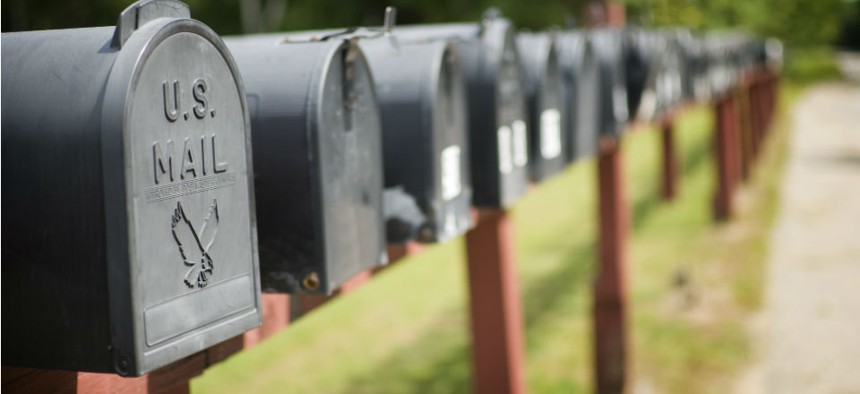
I. Grasbergs / Shutterstock.com
Snail Mail Gets Slower: Why USPS Is Missing Its Own Mail Delivery Goals
Disagreement abounds as the Postal Service blames bad weather, not job cuts and plant closures, for slower mail.
The U.S. Postal Service has delivered mail at a slower clip this year, but -- despite claims to the contrary -- the agency maintains the diminished service standards are not a reflection of cutting staff and closing facilities.
Even despite shifting the standards to allow for the consolidation of its mail processing network, USPS has been delivering mail on time less often this year than in 2012 and 2013, according to a Government Accountability Office report. The Postal Service met its “delivery performance” goals with increasing frequency until around mid-2013, when the amount of mail delivered on time for most products either leveled off or declined.
Previously, USPS significantly reduced the amount of mail that it delivered overnight. It also shifted a substantial amount of mail from a two-day delivery standard to the three-to-five day range. Overall, USPS downgraded its delivery standards for about 28 percent of first-class mail (when an individual sends a letter or bill). The Postal Service said these changes allowed it to consolidate facilities and rely less heavily on air delivery. USPS has shuttered 141 processing facilities since 2012 and will close an additional 82 in 2015.
The Postal Service still struggled to live up to its revised standards, GAO found. For example, USPS delivered single-piece letters and postcards in the three-to-five day category on time 95 percent of the time in the third quarter of fiscal 2012. By the third quarter of fiscal 2014, that success rate had dropped to 91 percent.
The Postal Service dismissed GAO’s findings, saying that while the aforementioned statistics were taken from nationwide data, GAO’s separate case studies in the Dakotas and Chicago were not representative of the agency at large. USPS also pointed to “historically severe winter weather” in the first half of fiscal 2014 as responsible for any drop offs in delivery performance.
Sen. Tom Carper, D-Del., was equally dismissive of the Postal Service’s excuses, saying the report illustrates the problem with USPS’ attempt to cut its way out of fiscal difficulties.
“Continuous budget cuts to services affect the Postal Service’s ability to thrive and provide a dependable service that all Americans and businesses can count on,” Carper said.
Mark Dimondstein, president of the American Postal Workers Union, said the shortfalls of the “cutting, cutting, cutting” strategy were coming to light.
“Every single patron and customer of the Postal Service would know that GAO is correct, just in the way their own mail service has declined under the false leadership of Postmaster General Patrick Donahoe,” Dimondstein told Government Executive. He added USPS has changed its delivery standards but it “can’t even meet those.”
“If they change [the delivery standards] to 10-day maybe they’ll meet them,” Dimondstein said.
Both the union president and Carper advocated for comprehensive postal reform legislation (though they disagree on what that should look like). An overhaul would free the Postal Service from constantly having to reduce costs, they said.
“In the absence of reform, the Postal Service will be forced to continue these painful measures and others in order to keep the lights on,” Carper said. “To create a service that Americans can rely on -- a robust institution to serve generations to come -- Congress must take action.”
Carper recently penned an op-ed in USA Today calling on his colleagues to pass his bipartisan, USPS-backed postal reform bill, which he introduced with the op-ed’s co-author Sen. Tom Coburn, R-Okla. Carper has appeared on local media and put out a series of releases as part of a renewed push for a vote on the bill during the upcoming lame duck session of Congress.
Congress faces a full schedule upon its return after the midterm election, and even if it made time for postal issues, the Senate and House versions of reform remain largely at odds.
The GAO audit was not the only negative light shed on USPS this week, as a New York Times report on Monday found the Postal Service approved nearly 50,000 requests from law enforcement agencies -- including its own -- to secretly monitor the mail of individual Americans as part of various investigations. The program, known as mail covers, is more than 100 years old, but the vast extent of its use raised civil liberty concerns among privacy advocates, according to the Times.
(Image via I. Grasbergs / Shutterstock.com)







